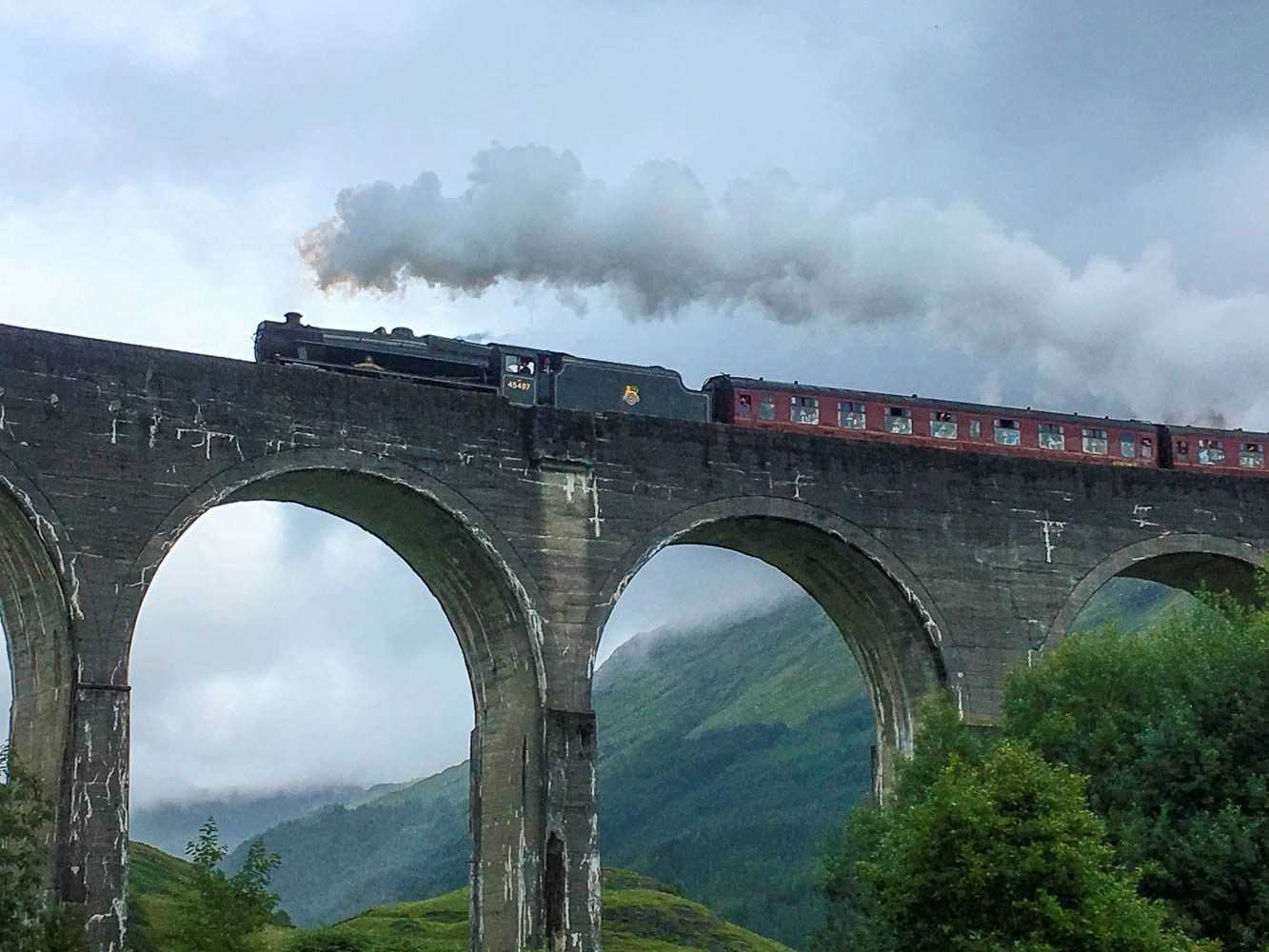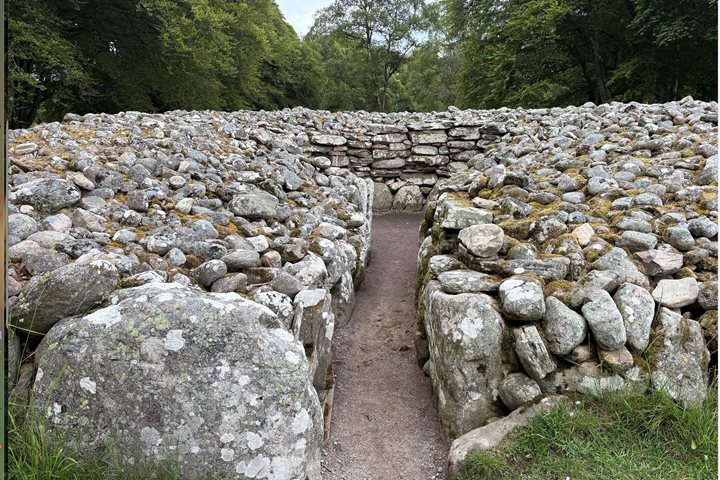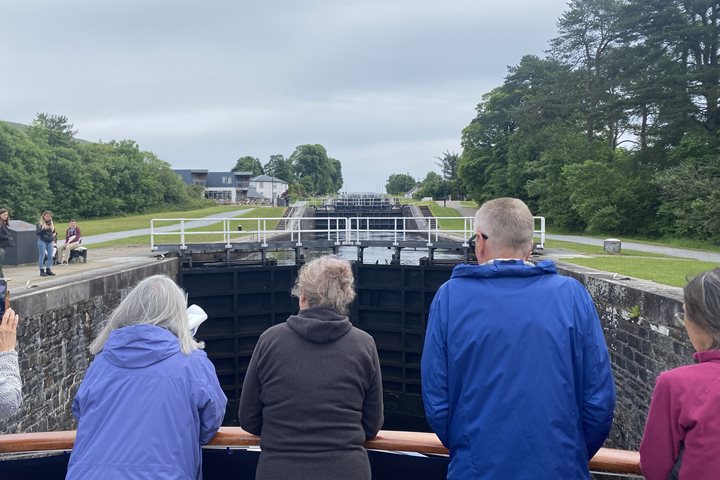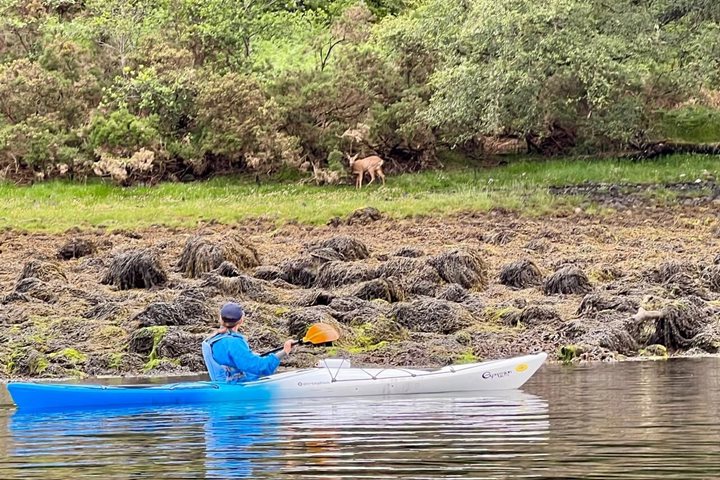Today we ended our travels through the Caledonian Canal. We descended Neptune’s Staircase, a series of eight locks that dropped the ship a total of 19m (62ft) over a quarter of a mile. Progressing through Neptune’s Staircase provides a great lesson on the machinations of the locks, and takes almost an hour and a half. This morning we disembarked before the boat was completely through the locks so that we could enjoy an excursion to Glenfinnan, the estate that estate manager Alistair Gibson talked about last night, and the site of the Glenfinnan Monument.
Glenfinnan lies at the head of the freshwater Loch Shiel, the point where Prince Charles landed in 1745 and raised his standard to begin the campaign to restore the Stuart dynasty, the campaign that ended in the disastrous defeat at Culloden in 1746. The estate has recently become known as the site of the Glenfinnan railway viaduct, made famous in the Harry Potter movies. Most of us walked up to the viaduct and were lucky enough to see the Jacobite steam train go puffing across. Some continued out the rough hill path beyond the viaduct, gaining good views over Loch Shiel, while others returned to the Monument and Visitor Centre to learn more about the history of the area.
We returned to the Lord of the Glens, and moved through the last lock of the Canal, sailing out of fresh water into the sea loch, Loch Linnhe. As we traveled toward the town of Oban, Robin gave a talk on “Natural Scotland,” an overview of the natural environment of the country: flora, fauna, and the nature-culture connection – with a wee bit of info on the endangered Wild Haggis. Shortly after the talk, we arrived in the bustling town of Oban, our berth for the night.
Oban is a busy place, providing services to the surrounding rural areas and serving as a transportation hub where ferries, busses, and trains converge. The town also has much to offer visitors, from interesting shops and pleasant walks, to McCaig’s Tower (also known as McCaig’s Folly) and of course, the distillery. McCaig’s Tower stands above the town, looking like a small, ruined Roman coliseum. It was constructed by the wealthy banker John Stuart McCaig in 1895, but was left unfinished with McCaig’s death in 1902.
Shortly after we arrived in Oban, we had the opportunity to tour the Oban Distillery, an education in whisky making. The Distillery is one of the oldest in Scotland, established in 1794 before Oban was even a town. The buildings remain much the same as they were in the 1890s when the business was renovated and updated. The tour ended with a nice sample of one of the Distillery’s products – a wee dram, as they say.
Before dinner captain Tony gave us a special recap: an overview of the Caledonian Canal history and construction, complete with historic photos. This gave us an in-depth understanding of the amazing canal route we had just traversed. There was the opportunity to stroll the town after dinner, enjoying a pleasant, Scottish summer evening.









